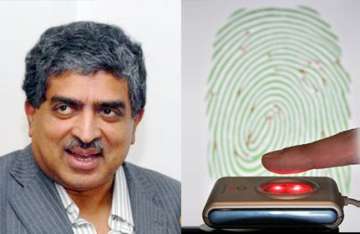All 10 fingerprints, an iris scan and a photograph of the person will be used for unique identification (UID) of individuals, the cabinet committee on UID decided on Tuesday, giving its in-principle clearance to guidelines for setting up the UID database, reports Times of India.
In a billion-plus population, a mix of biometric and photographic record is considered necessary to ensure fidelity of information collected in the project. With UID intended to help identify beneficiaries of welfare schemes, children between ages 5 and 15 will be included in view of the ambitious right to education.
Speaking at the Indo-Pak business summit organized by TOI and the Jang group of Pakistan as part of the Aman ki Asha initiative, chairman of UID Nandan Nilekani said the Cabinet approval followed a presentation on UID. "There was a review and we have clearance to put in place protocols and technology to implement the guidelines," said Nilekani.
In keeping with the government's efforts to improve services like PDS and MNREGA, the priority in UID's rollout will be the poor and children eligible under the recently notified Right to Education.
The former Infosys whiz said fingerprints of all 10 fingers would help prevent duplicate IDs being issued and establishing a particular person was just who he or she claimed to be. Admitting that the technological challenge of building such a database was not inconsiderable, Nilekani said the process would be wholly voluntary.
He did not think UID being non-mandatory would dilute its purpose, as ninestates have agreed to use the data to improve delivery of social welfare schemes. "Once utility of UID is apparent, there will be peer pressure to follow suit. The first set of UIDs will be issued between August 2010 and February 2011," he said.
The Cabinet approval means that the UID rollout will actually get underway.Nilekani said the government was aiming for 600 million users by 2014. The numbers would help facilitate "no-frills" bank accounts for the poor who receive payments through schemes like MNREGA and the proposed National Food Security Act, he said. They would also help check disbursal of benefits such as old-age pensions.
The IDs issued under the scheme will be 12-digit numbers and these will be verified by authentication machines that can read fingerprints and send the information to a central database. The principle is not unlike credit card readers and Nilekani said UID would use mobile networks to send the information to and fro.
A draft UID Bill to give the authority statutory powers and form has been readied and is expected to be cleared by the Cabinet in a few weeks, which could mean that it will be brought to Parliament in the monsoon session. A well-considered legislative framework is also needed in view of the privacy and legal issues raised by some sections of civil society.
Latest India News
